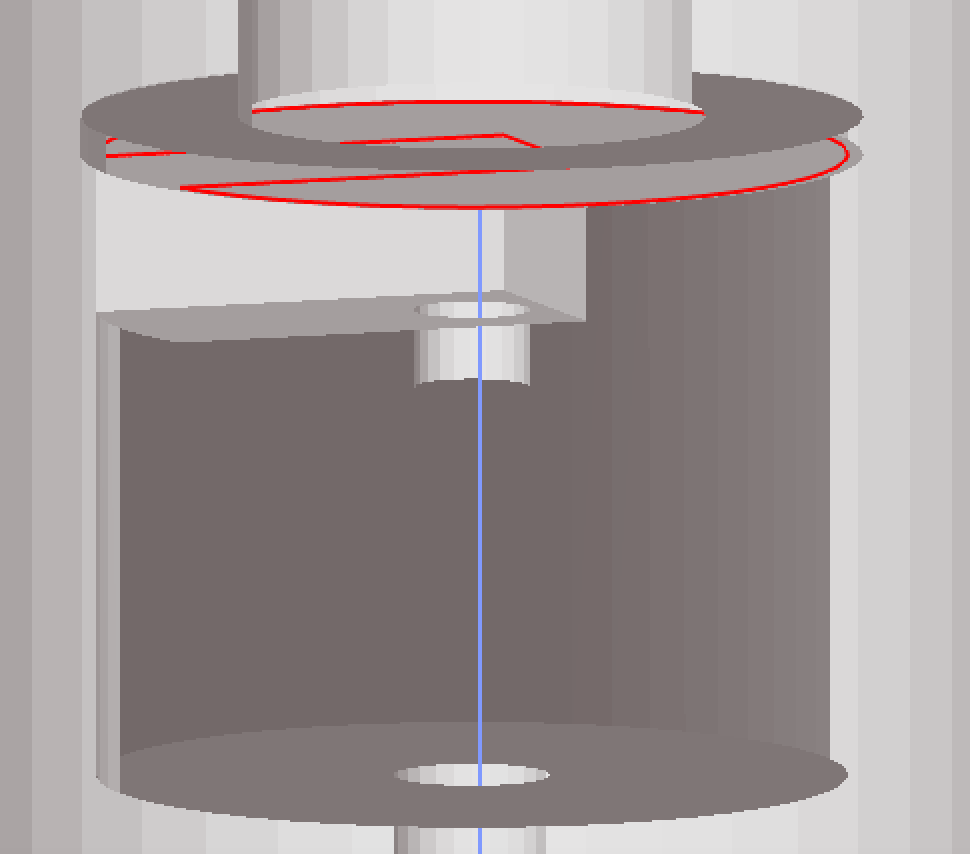Dear Tobi,
One of the core principles of Molflow is that in can only generate, reflect or absorb molecules on surfaces (and not in the volume). This is the reason that you can't set a starting pressure: that would require recognizing "valid" space between the facets and uniformly fill it with initial particles.
In theory, you could create such an initial condition by injecting some particles for a very short burst (controlled by parameters, as described in the time-dependent mode), closing injection and waiting until gas reaches equilibrium, then open the holes leading to the outer chamber and plot the pressure decrease.
I would advise against using this approach though: in time dependent mode all hits are simulated, so it is suitable up to processes taking a few seconds (few million collisions) but not longer.
Luckily for you, your problem can be solved easily if we go back to vacuum theory :)
If you have an inital pressure p(0) in a volume V and the pumping speed is S (everything in SI units), then the pressure evolution will be:
p(t) = p(0)*exp(-t * S/V)
The S/V is the time constant of the system: basically the faster we pump (S), the faster the pressure decrease will be, on the other hand the larger the volume is (V), the slower.
You know already p(0), the target pressure, the volume V, so to get t you need the pumping speed S.
Basic UHV vacuum theory says p=Q/S where Q is the outgassing in SI units
It means the more you pump, the lower pressure you'll get, and the more you inject, the higher.
Do the following: forget Molflow's time-dependent mode, do a steady state simulation:
- Set uniform (per area) outgassing to your inner chamber walls. The absolute value doesn't matter as long as it's uniform.
- Set pumping in the outer chamber with the real pumping speed of the simulated system
- Run the simulation and see what pressure Molflow calculates in the inner chamber. For this you can create a large transparent facet in the middle.
Then you'll get the effective pumping speed of your outer pumps in the inner chamber. You know Q (the outgassing sum, you can check it for example in the Global Settings window), you just calculated P, therefore you'll get S.
Plug that S in the first equation and you'll get the pressure solution of your system.






